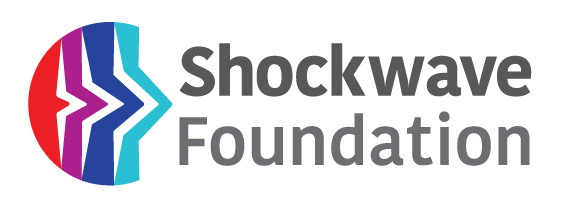
Shockwave Introduction
We focus on climate resilience solutions that represent novel ways of stewarding ecosystems and create stable communities in the face of climate change created shocks, adapting and building climate resilience, as we live with the predictable uncertainty of climate change.
Science tells us that even with climate mitigation efforts, we will face ongoing climate impacts for decades or centuries. Rather than see these only as disruption and loss, we view this as an opportunity to create better communities, ecosystems, and economies, if we experiment now, learn needed lessons, and help others deploy them before the worst of the catastrophe is upon us. We view this catastrophe as a call to build better.
As a smaller funder, we look for ways to have outsized impact. One way we do this is by providing catalytic funding to replicable solutions and raising the visibility of the organizations we fund. We also look for ways to co-fund and partner with others in the field and advocate for more funding in the climate resilience space. Last, we take risks on new approaches and ideas if the upsides are significant.
Shockwave makes both impact investments and provides philanthropic grants. We have a fairly narrow scope and well defined criteria for philanthropic funding, focusing mainly on grants going to organizations in Africa, Central and South America.
Our debt and equity investments are primarily US-based and support climate resilience and mitigation technology, agricultural transitions, clean energy, and support economic development in traditionally targeted and suppressed communities of color.
How We Evaluate Philanthropic Investments
We do not fund projects or submissions that do not include explicit attempts to address climate impacts, focus on adaptation, have a long-term outlook, and aim to achieve scalable or replicable resilience. Projects must make a significant impact, not only to the immediate communities served, but also communicate lessons learned that will benefit other projects with similar or complementary implementations.
We categorize projects into three levels of support for climate adaptation and resilience:
- No Clear Focus on Climate Change: The project, program, or policy does not directly address climate change impacts.
- Indirect Climate Co-Benefits: The project, program, or policy addresses climate change impacts, but only as an indirect co-benefit.
- Climate Adaptation and Resilience are Central: The project, program, tool, or policy is primarily focused on climate adaptation and/or resilience, both or either of which are direct and clear, main targets for the work. An explicit climate risk assessment framework exists with some analytical approach, even if future climate impacts are also seen as challenging to quantify or define with high confidence. A resilience outcome is described, and indicators are proposed to measure progress against that outcome.
We only focus on category 2 and 3 projects.
Effective Proposal Qualities
We desire to fuel scalable innovation and experimentation and develop a palette of shovel-ready solutions. Effective proposals should include the following qualities:
- Long-Term Planning: A focus on long-term trends and issues rather than immediate humanitarian crisis concerns. Has the long term (10, 20, 30 years out) horizon been considered and included in planning?
- Defined Impacts: What are the climate impacts, social and natural, that are of concern and how are they being targeted? Are the actions being proposed going to contribute directly or indirectly?
- Defined Beneficiaries: Resilience for whom? Who and what are the beneficiaries of the interventions? Do direct and indirect beneficiaries exist and can they be quantified?
- Quantified Limits: Resilience until what other conditions change? Is there a sense of when proposed programs might have a limit to their efficacy and a consideration of what happens when approaching those limits?
- Systems Approach: A water supply project, for instance, should show an awareness of other water system stakeholders, users, and upstream-downstream relationships and how the proposed interventions may interact with the larger, ecological, social, institutional, and hydrological context.
- Scalability/Replicability: Projects should be able to scale up and/or transfer critical knowledge to be useful to the most people possible.
While a good project may need incubation and nurturing, it should in time be able to stand independently so that those who are made resilient can carry that work forward. Growth and independence are important performance indicators for our partnerships and investments, and those qualities should be built into the DNA of an organization.
Investable Water Projects
We only invest only in projects and organizations that are working to ensure that water resources and water systems are resilient and can continue the provision of water over time. We are guided by the knowledge that water resources interconnect projects, sectors, and communities. They must be coordinated for long-term resilience.
The solutions we fund generally fit into the following broad categories:
Data Platforms and Decision-Making Tools
- Monitoring technology to inform adaptive management and governance for water resources, including short- and medium-term climate forecasting that integrates an analysis of uncertainty and sensitivity.
- Tools to systematically assess water use, allocation, and tradeoffs across multiple sectors, ensuring that plans are robust, flexible and able to withstand the impacts of climate change.
- Tools for safe water enterprises to help assess the risk of drought, floods, and other natural disasters.
Water Resource Management Solutions
- Restoring the hydrological function of surface and riparian flows to support community, economic, and ecological transitions from climate change, creating “room for the river” through riparian wetlands.
- Groundwater recharge zones for flood waters to increase water storage and reduce flood damage.
- Nature-based water storage and transfer solutions, such as wetland “tanks” and aquifer recharge systems, to compensate for declining seasonable water or the instability caused by extreme precipitation events.
Finance and Governance Platforms for Water Security
- Water Funds, invested in by municipal utilities, businesses, and philanthropy, that pay for watershed protection and reforestation, thereby protecting the quantity and quality of water downstream.
- Advocacy and communications to support innovative finance mechanisms or adaptive governance platforms.
Initiatives that increase durability of existing systems
- Transitioning a community’s water groundwater access system to a flood-free zone, and adding a redundant, independent pump system.
- Projects that diversify a community’s sources of water, including rainwater collection systems or alternative addition water sources.
Investable Food Security and Agriculture Projects
We invest in a palette of replicable climate-resilient solutions that increase productivity, food system resilience, and food security in the face of a changing climate. We prefer initiatives that reduce greenhouse gasses and achieve other development goals (e.g., energy, WASH, ecosystems, and manufacturing).
The solutions we fund generally fit into three broad categories:
Climate-resilient agriculture technology platforms and products
- Irrigation technologies or climate-resilient seeds or other inputs.
- Timely information about weather patterns and imminent risks, including climate advisory services and training needed to take advantage of these services or amplify these services.
Agricultural finance and economic resilience
- Programs to help farmers diversify income streams, strengthening connections to commercial markets, diversifying crops and livelihoods.
- Agricultural insurance products.
- Input credit that allows farmers to purchase high-quality inputs and make payment after harvest.
- Agricultural extension and capacity building programs that build long-term knowledge, support transitions to high-value resilient agriculture, and that integrate agriculture within broader economic and ecological systems.
Agroecology and regenerative agriculture
- Scaling up the application of proven agroecology and regenerative agriculture initiatives for soil, cropping systems, and range management.
- Coordinating regional planning, advocacy, and implementation of these techniques for private landowners.
- Transitioning or expanding subsistence livelihoods to encompass more regenerative commercial activities.
In Summary
Shockwave works to ensure that our future is not merely “less vulnerable” to climate impacts. We build resilience by supporting organizations with impactful, scalable solutions. By focusing on food and water security and the strong linkages between these two sectors, we focus our portfolio on the areas we believe are the most vulnerable to climate change.
If we are successful, other groups will build upon our partnerships. If we are successful together, we will be a catalyst for future generations, well beyond the lifetime of Shockwave itself.
